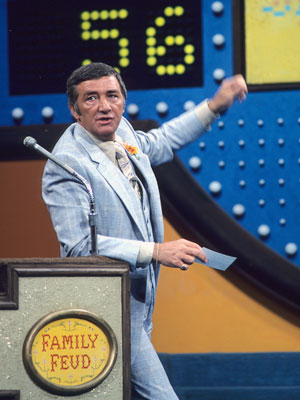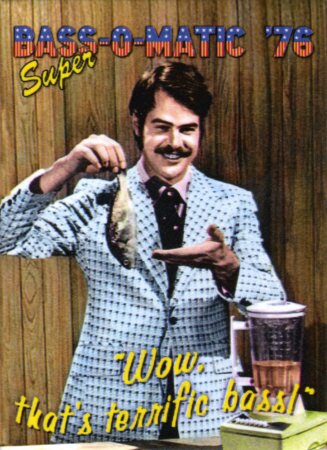 "If you're not first, you're last"
"If you're not first, you're last"
--Will Ferrell in Talladega Nights
The experience of being either an entrepreneur or a product manager is emotionally wrenching. You are awash in uncertainty and feel the crush of expectations. When launching a business or introducing a product, despite whatever research, analysis or reports, the entire endeavor hinges on a belief--a belief in yourself, your product and/or your judgement.
Nothing is for certain until the product hits the shelves or the business opens its doors.
To minimize the uncertainty, many cling to trying to be the first to pioneer a product, service or idea. And, over the years, there has been a lot of research by some very smart people saying that being first makes all the difference. In fact, some of these very smart people have even said that they could not find
any instances of pioneers that have failed.
There is some wonderful research by the very talented tandem of NYU's Peter Golder and USC's Gerard Tellis on new product introductions that shows that the "pioneer" advantage is overblown at best. Specifically, they say that the race does not go to the swift--the pioneers--but instead to "early entrants" who aren't the first to market, but rather,
the first to get it right. And in their extensive analysis of companies from the late 19th century forward, it turns out that pioneers failed at about the same rate as other businesses while early entrants have a lower failure rate and a much higher instance of market leadership.
So, what determines, "getting it right"? The criteria identified by Golder & Tellis include:
- a vision of the mass market
- managerial persistence
- financial commitment
- relentless innovation
- asset leverage
The "Vision" Thing: Pioneers obviously have some amount of vision in order to be ahead of the pack, but where their vision has failed them in many instances is not being able to see beyond their product to their customer. A great example they cite is the video recorder market and the product pioneer Ampex. If you have never heard of Ampex, chances are that you have also never paid $50,000 for a video recorder. Their technology in 1956 was revolutionary and they were able to sell products commercially. However, given their monopoly on the market at the time, they set forth on the ambitious mission of making an even better $50,000 video recorder. That, at the time, likely seemed like a wise decision. After all, if it ain't broke. . . At that same time, a couple of start-ups, Sony & JVC, set their sites on making video recorders house hold items at about $500 a unit. I am told that both Sony and JVC became successful companies.
So, while Ampex had a great vision for the technology, their vision for the market? Eh, not so much.
Managerial Persistence & Financial Commitment: This is probably the most difficult aspect of success. New products often take several years--in some cases a generation--to become mainstream. And in the meantime, stake holders in that product have to be convinced to stay the course. This is no small task when shareholders, financiers and leadership are demanding compelling returns and you have to stake your job and reputation on asking them to wait to see the fruits of their investment. Further complicating the analysis is that companies often have a bad strategy or product and in those instances, the right decision
is to pull the plug.
Golder & Tellis offer a few examples of companies jumping ship too early, including Rheingold Brewery which introduced the concept of light beer in 1967. In the face of sluggish sales, Rheingold not only abandoned the light beer product, they fired the managers who had championed the concept. Lite Beer from Miller was introduced eight years later, advertised heavily and has been wildly successful ever since.
With business, as with any of life's greatest endeavors, there comes a gut check--a point where trust and commitment are all you have. And at that time, if you believe in what you are doing, you must press forward and accept risk and uncertainty. As Golder & Tellis point out, the great companies are the ones that can do this.
Relentless Innovation: One of the hardest things to do in business is to knowingly cannabilize your own revenue. But, it is always better to eat your own lunch, than have someone else eat it for you. They point to Gillette's cannibalization of their razor businesses over the years in order to renew its market leadership. I like to also point to The Dayton Company--an owner of department stores--which saw that traditional department stores were giving way to large scale discounters, so they founded one of their own, called Target.
Asset Leverage: What Golder & Tellis call "Asset Leverage", I might call "dropping the hammer." It's using your most compelling tools to the utmost. Large, successful companies have tremendous assets at their disposal--brand recognition, complementary products, financial resources, distribution networks and more. And in enterring a market, these companies can utilize those assets in a forceful way. There are a large number examples of this we can all cite. Golder & Tellis reference "Diet Coke" crushing the pioneer in diet sodas, Royal Crown. (My favorite is Microsoft's Internet Explorer, though their asset leverage aroused the interest of regulators worldwide.)
Given all of these examples, Golder & Tellis would seem like they are saying that an untried trail is a fool's path. Not so. They are merely saying that it's better to do it best, than to do it first.
They did a couple of articles on this topic, one in the
Journal of Marketing Research, which is more technical and theoretically oriented, and the other in MIT's
Sloan Management Review (
article found here, subscription required). I would highly recommend that any entrepreneur or manager read the
Sloan article. It is well researched, powerfully written and reads like a strategic manifesto. Perhaps most importantly, it gives perspective on the patience, hard work and (to quote the professional wrestler Gorilla Monsoon) "intestinal fortitude" it takes perservere in the market.







.jpg)














